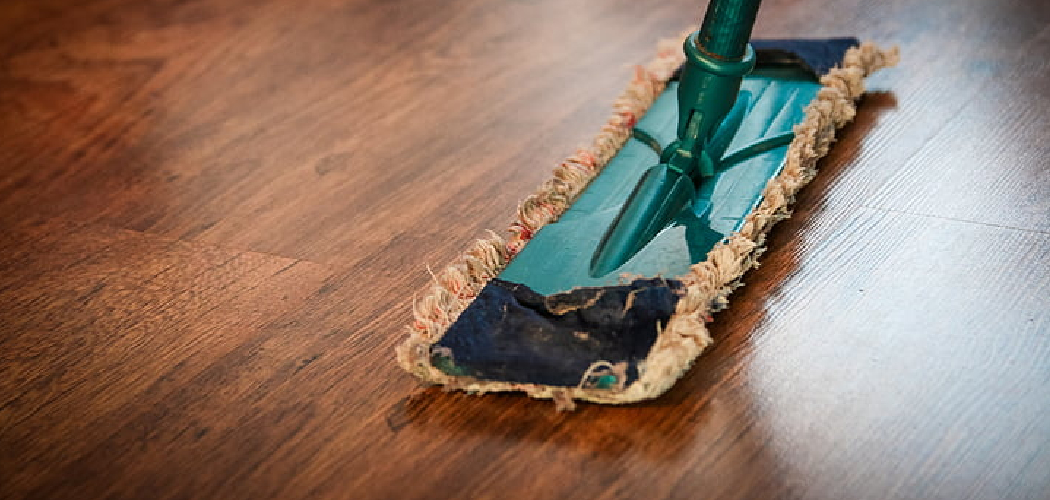Engineered hardwood flooring has become increasingly popular as a more durable and low-maintenance alternative to traditional hardwood. However, with all of its great benefits come drawbacks – it can be tricky to clean, especially if you are unfamiliar with the proper techniques. Don’t worry!
Whether dealing with light surface dirt or a stubborn stain, here is everything you need to know about keeping your engineered hardwood looking great.
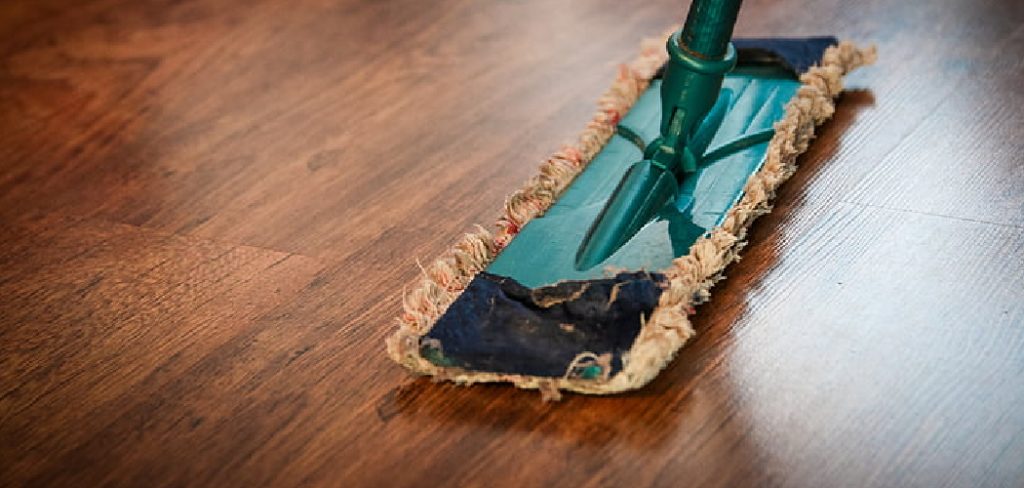
In this blog post, we’ll discuss how to clean engineered hardwood floors without damaging them. We’ll cover everything from selecting the right cleaning products to understanding the best way to vacuum and mop your floors for an impressive level of cleanliness. Keep reading for more helpful tips on ensuring your engineered hardwood floors look their best!
What Will You Need?
Before you start cleaning your engineered hardwood floors, make sure you have the following supplies:
- Vacuum cleaner with a soft brush attachment
- Hardwood floor cleaning solution
- Mop
- Bucket
- Soft cloths for drying and buffing
Once you have the necessary supplies, ensure your floor is swept of dust and debris. This will help to prevent scratching as you work on cleaning your floors.
10 Easy Steps on How to Clean Engineered Hardwood Floors
Step 1: Remove Loose Dirt and Dust
The first step in cleaning your engineered hardwood floors is to remove any loose dirt and dust. This will prevent small particles from scratching the surface of your floors when you mop. Use your vacuum cleaner with a soft brush attachment to gently pick up any dust and debris from your floors.
Be sure to get into any corners and along the baseboards, as these areas tend to accumulate the most dust. If you don’t have a suitable vacuum, a soft broom can also be used for this step.
Step 2: Prepare the Cleaning Solution
The second step involves preparing the cleaning solution. For engineered hardwood floors, it is critical to use a cleaner specifically designed for hardwood to avoid any potential damage. Fill your bucket with warm (not hot) water and add your hardwood floor cleaning solution following the manufacturer’s recommended proportions.
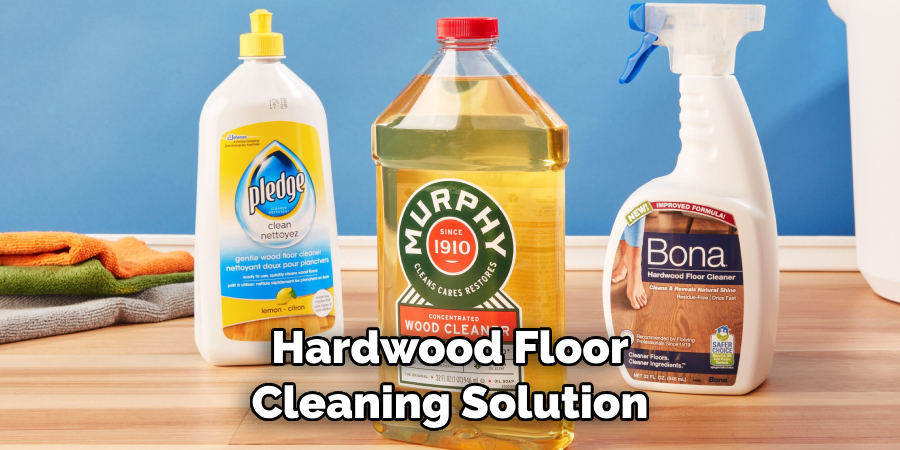
Always check the label of your cleaning solution to ensure it is safe to use on engineered hardwood. Once your solution is prepared, you’re ready for the next step.
Step 3: Mop the Floor
The third step in cleaning your engineered hardwood floors is to mop the floor. It’s important to mop along the wood grain to ensure a thorough clean. Dip your mop into the cleaning solution, ensuring you wring out any excess. Too much water can be damaging to engineered hardwood.
Gently mop the floor, re-dipping and wringing out the mop as required. Remember to replace the cleaning solution if it becomes too dirty, this will help maintain the effectiveness of your cleaning.
Step 4: Dry and Buff the Floor
The fourth step to properly clean your engineered hardwood floors is to dry and buff them. After mopping, it’s crucial to ensure no standing water or cleaning solution is left on your floors as it can seep into the seams and cause damage. Use soft, dry cloths to dry the floor, working in sections if the floor is large.
Once the floor is arid, use a clean cloth to buff the surface, following the direction of the wood grain. This will give your floors a nice shine and finish the cleaning process.
Step 5: Regular Maintenance
The fifth step is all about regular maintenance. To prolong the lifespan of your engineered hardwood floors and maintain their luster, it’s recommended to clean them weekly with the method we just explained. However, for high-traffic areas, you may need to clean more frequently.
Set a routine cleaning schedule based on the usage of your floors. Additionally, reduce wear and tear by using rugs or mats in high-traffic areas. Lastly, promptly clean up any spills to prevent stains or water damage. Regular upkeep will keep your engineered hardwood floors looking their best.
Step 6: Addressing Tough Stains
For tough stains on your engineered hardwood floors, such as oil, paint, markers, or ink, use a soft cloth slightly dampened with a hardwood floor cleaner specifically designed for such stains. Remember to rub the stain gently, paying careful attention not to scrub too hard, as this could damage the surface of your flooring.
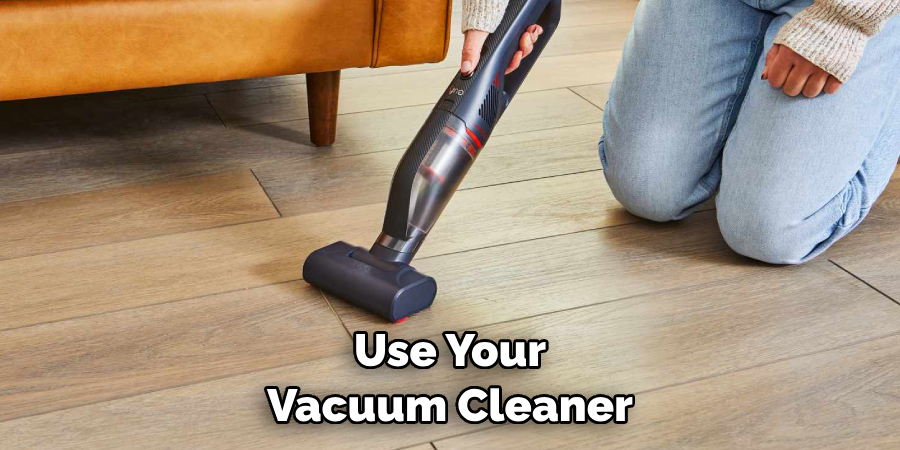
Always test the cleaner on an inconspicuous area of your floor to ensure it does not discolor or damage the hardwood. Once the stain is removed, dry the area immediately with a clean, soft cloth.
Step 7: Preventive Measures
The seventh step focuses on preventive measures to maintain the beauty and durability of your engineered hardwood floors. Placing protective mats at entrances and high-traffic areas is a good idea. These mats can trap dirt, grit, and moisture from shoes, reducing the potentially damaging material that comes into contact with your floors.
Also, consider using felt pads under the legs of furniture to prevent scratches and dents. Furthermore, avoid walking on the floors with high-heeled shoes or cleats, as they can cause significant damage to the wood surface.
Step 8: Avoid Harmful Cleaning Methods
The eighth step is avoiding cleaning methods that harm your engineered hardwood floors. Never use steam mops, wet mops, or harsh cleaners despite how dirty your floors may be. These can cause warping, buckling, and discoloration of your floors.
Similarly, avoid using oil-based soaps and wax because these substances can build up on the floor over time and dull the finish. Instead, stick to the cleaning methods recommended in this guide, using products specifically designed for engineered hardwood.
Step 9: Regular Inspections
The ninth step is to conduct regular inspections of your engineered hardwood floors. Over time, wear and tear can cause minor scratches and dents that, if left unattended, can lead to more serious damage. Regularly inspect your floors for any signs of damage. If you notice any scratches, repair kits are available designed specifically for engineered hardwood floors.
For more serious damage, like deep scratches or areas where the top layer of wood has worn away, you may need to call in a professional. Regular inspections will help you catch potential problems early, keeping your floors in top condition.
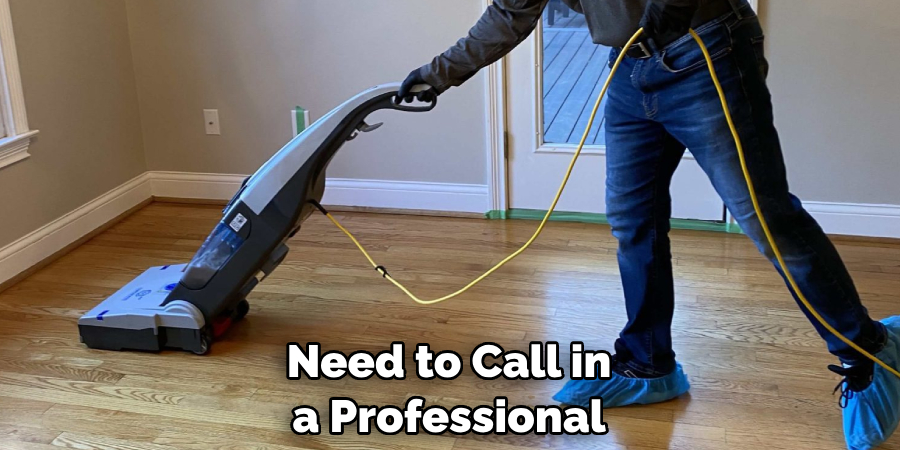
Step 10: Product Recommendations
The tenth step involves recommending products that maintain your engineered hardwood floors. When choosing a cleaner, ensure it is specifically designed for engineered hardwood. Products such as Bona Hardwood Floor Cleaner and Black Diamond Wood & Laminate Floor Cleaner are often recommended.
For mops, opt for a microfiber mop as they are gentle on the floor yet effective at cleaning. Products like the Turbo Microfiber Mop can be a worthy investment.
By following these steps, you can keep your engineered hardwood floors clean and looking their best for many years to come. With proper care and maintenance, your floors can remain in top condition while adding a touch of beauty to any room.
5 Additional Tips and Tricks
- Make sure to vacuum your engineered hardwood floors at least once a week. This will help remove dirt, dust, and other debris that can damage the floor over time.
- If you have pets, trim their nails regularly to minimize scratches and dents on the floor.
- Never use furniture polish or wax on your hardwood floors, as this can dull the finish over time.
- Consider using area rugs in high-traffic areas to reduce wear and tear on the floor.
- Always use felt pads or sliders when moving heavy furniture to reduce the risk of scratches and dents.
By following these five tips and tricks, you can keep your engineered hardwood floors looking their best for years to come.
5 Things You Should Avoid
- Avoid using steam or wet mops on your engineered hardwood floors, as this can cause warping and discoloration.
- Never use oil-based soaps or wax on the floor, as these substances can dull the finish over time.
- Do not walk on your hardwood floors with high-heeled shoes or cleats, as these can cause significant damage to the wood surface.
- Don’t use abrasive cleaners or scrubbing brushes on engineered hardwood floors, as this can scratch and damage the flooring.
- Avoid dragging furniture across the floor when moving it, as this can also cause scratches and dents in the hardwood surface.
By knowing what not to do when it comes to maintaining your engineered hardwood floors, you can keep them looking their best for years.
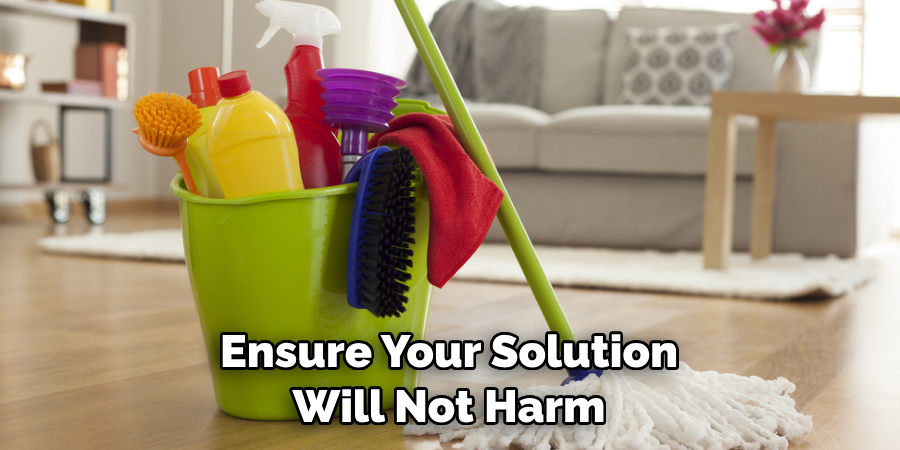
Conclusion
How to clean engineered hardwood floors is an important part of maintaining them throughout their lifetime. Although the upkeep may seem like it requires a lot of detergents and a hard scrub, it’s quite simple if you use the right products and methods. Sweep, vacuum or dust mop regularly with a soft bristle broom, dry cloth, or microfiber mitt to prevent dirt and debris from creating scratches on your surface.
When it comes to the more frequent deep cleans, always test cleaners in an inconspicuous spot beforehand. And don’t forget that some surface treatments, such as urethane coatings, can be extremely sensitive to water.
Fortunately, suppose the worst happens, and you encounter scratches or damage. In that case, most engineered woods can be sanded down very lightly so that the stain fits back into the affected area without replacing large flooring sections.
Ultimately, with just a bit of patience and extra attention, you can keep your engineered hardwood floors looking beautiful for years to come.
